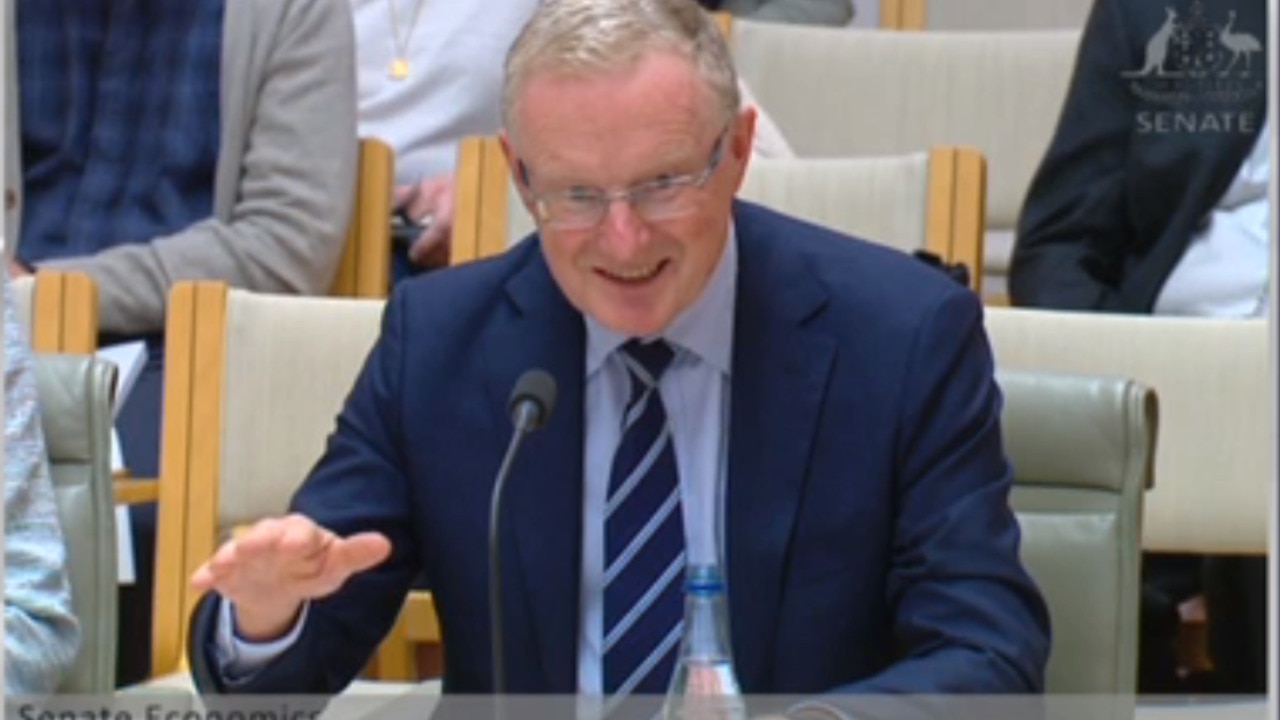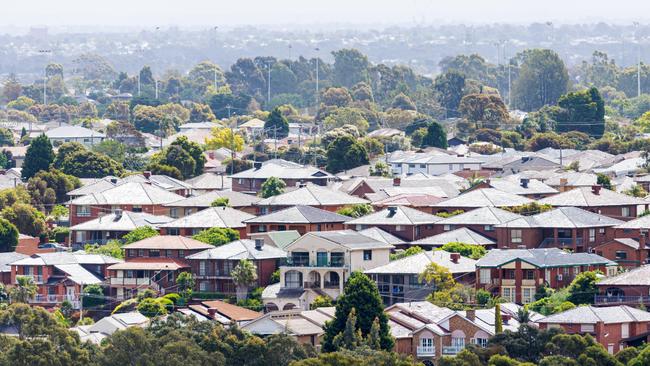Aussie homeowners to face rate rise pain after RBA interest rate hike, pushing cash rate to 3.85 per cent
Homeowners will face a double-barrel assault from rising cost-of-living pressures and high interest rates, as the RBA delivered another hike.

Interest Rates
Don't miss out on the headlines from Interest Rates. Followed categories will be added to My News.
Homeowners will face a double-barrel assault from rising cost-of-living pressures high interest rates, with the Reserve Bank delivering a surprise cash rate hike of 25 basis points on Tuesday.
Australia’s official interest rate now sits at an 11-year high of 3.85 per cent.
Compare the Market money general manager Stephen Zeller said the latest increase would likely plunge borrowers into a “world of pain”.
Households with a $600,000 mortgage could now be paying $1351 more each month since 2022, with those coming off a fixed rate likely to be hit the hardest.
“But these rate rises are just the tip of the iceberg, as homeowners are being hit with even higher costs, with the cost of groceries, fuel and energy all soaring,” Mr Zeller said.
He feared households coming off a fixed rate could be facing a “rate grenade” and urged people to consider refinancing.
“If you’re on a fixed rate due to expire, you should be looking for the most competitive rate available and planning to make the switch or negotiating a lower rate with your current lender at least a month beforehand,” he said.
However, Reserve Bank governor Philip Lowe said the hike was necessary in order to return inflation to the goal range of 2 to 3 per cent, which he listed as the RBA’s “priority”.

While inflation slightly slowed in the March quarter, Australia’s Consumer Price Index remained at an “uncomfortably high” position of 7 per cent.
“Inflation in Australia has passed its peak but at 7 per cent is still too high and it will be some time yet before it is back in the target range,” Dr Lowe said in his monthly statement.
“Given the importance of returning inflation to target within a reasonable timeframe, the board judged that a further increase in interest rates was warranted today.”
Other factors that led to Tuesday’s interest rate rise included high service inflation and Australia’s tight labour market, with increasing labour costs despite productivity growth.
Fresh fear after rate hike
Dr Lowe also warned that “further tightening” mighty be necessary, indicating future pain for households already struggling with rising cost-of-living pressures.
He said the RBA was determined to bring down inflation and “will do what is necessary” to achieve that.
“Some further tightening of monetary policy may be required to ensure that inflation returns to target in a reasonable timeframe, but that will depend upon how the economy and inflation evolve,” he said.
“The board will continue to pay close attention to developments in the global economy, trends in household spending and the outlook for inflation and the labour market.
“The board remains resolute in its determination to return inflation to target and will do what is necessary to achieve that.”

Once again, he warned of the dangers of not controlling inflation, which he said would be “very costly to reduce later” and could result in “even higher interest rates and a larger rise in unemployment”.
Despite the immediate pain, he said the medium forecast was positive.
“Medium-term inflation expectations remain well anchored, and it is important that this remains the case,” he said.
“Today’s further adjustment in interest rates will help in this regard.”
Treasurer: ‘Inflation primary challenge’
Jim Chalmers described the Reserve Bank‘s decision as a “really difficult” one for many Australians who were already facing financial pressure.
“This is a reminder that inflation remains the primary challenge in our economy,” the Treasurer told reporters at Parliament House in Canberra on Tuesday following the cash rate hike.
Dr Chalmers took the opportunity to stress that the government had been facing tough economic conditions as it prepared to hand down its second budget next week.
“The priorities in that budget will be responsible cost-of-living relief that doesn‘t add to inflation,” he said.

Asked if he was worried the Reserve Bank could drive Australia into a recession by tightening interest rates to such a degree, Dr Chalmers said the bank was independent of the government and he wouldn’t second guess its decisions.
However, he said the central bank and Treasury both expected the nation‘s economy to “slow substantially” later this year.
“That is the inevitable consequence in my view of higher interest rates combined with the global slowdown,” he said.
“And so the Reserve Bank’s forecasts reflect that, Treasury’s forecasts reflect that too, and you’ll see that in the updated forecast that I release (next) Tuesday.”
Interest rate increase unlikely to offset house prices.
While home loan applicants will continue to lose their borrowing power after Tuesday’s rate rise – with maximum borrowing capacities dropping by about 30 per cent – it’s unlikely interest rate rises will offset house prices
“The impact of interest rate rises is being counterbalanced by stronger housing demand and tight supply conditions,” PropTrack senior economist Eleanor Creagh said.
“The path for home prices in the months ahead will be influenced by many opposing factors, including the level of supply hitting the market and the trajectory of interest rates.
“Headwinds remain, with the full impact of rate rises already delivered yet to be felt and the possibility of further tightening still in play.”
Ms Creagh said many other factors would cause home prices to stabilise as uncertainty eased.
“A home shortage exacerbated by high construction costs and industry challenges will also underpin values as the population grows,” she said.
“Positive demand drivers stemming from the shortages in rental supply and rebound in international migration also remain, alongside ongoing tightness in the labour market which is promoting a sense of job security.
“A slow increase in wages growth will also maintain housing demand against a backdrop of tight supply.”

CreditorWatch chief economist, Anneke Thompson added that borrowers who had secured a home loan in the past two years would feel the most pressure; however, she said it was “highly likely” that rising rates had peaked.
“The RBA will be hoping that this latest move will put the economy deep into restrictive territory and help to slow demand in the services space to ease price rises (in goods and services),” she said.
“However, both energy and rental costs are not responsive to interest rate moves, so it is likely inflation in these areas will prove very sticky.”
Originally published as Aussie homeowners to face rate rise pain after RBA interest rate hike, pushing cash rate to 3.85 per cent


